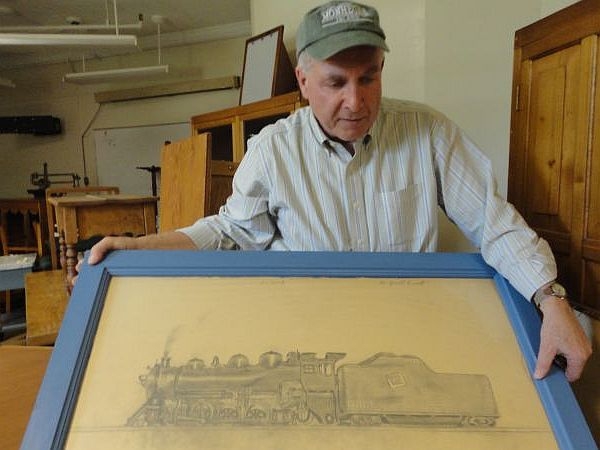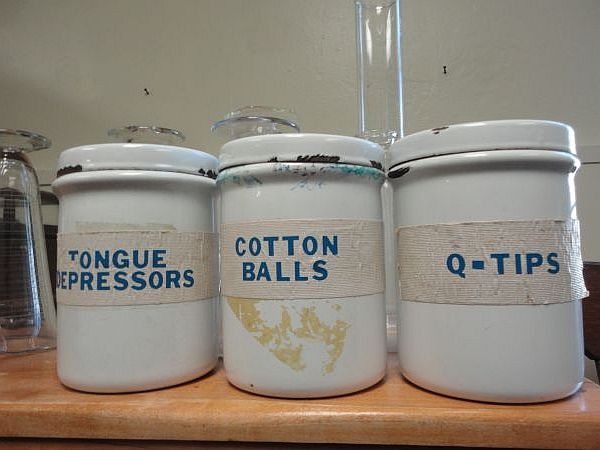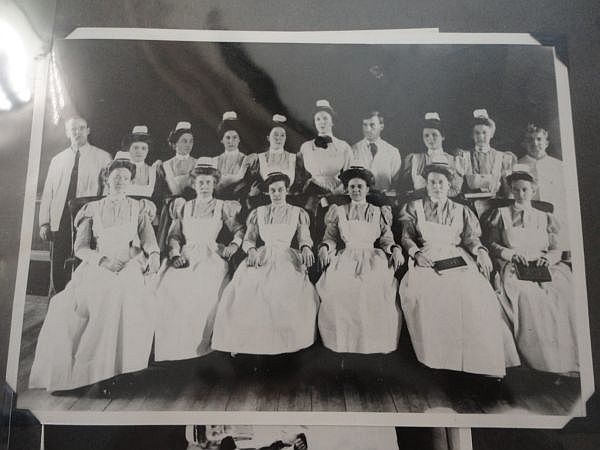
Ever since Tropical Storm Irene, the buildings at the Waterbury office complex have been largely empty. But they’re still full of history. As preparations are made to tear down many of them, officials are cataloging the historic artifacts they contain.
In the process they’ve made a surprising discovery.
As state curator, David Schutz’ job is to preserve historic artifacts at all state agencies. That means keeping track of furniture, paintings and the other objects that tell the story of Vermont state government.
The Vermont State Hospital long predates all the other buildings at the Waterbury office complex. Originally called the Vermont State Hospital For The Insane, it opened in 1891.
But until now its contents had never been cataloged. When it was vacated after the flood, Schutz was amazed at the artifacts he found there.
"For example, weights that were strapped to the shoes of patients to prevent them from fleeing, straightjackets, all kinds of pharmaceutical devices, old artifacts related to how this place used to treat mental illness," Schutz explains.
An album of photos shows nurses as they dressed a century ago in full length gowns under their white aprons. And there are old pictures of the hospital’s interior.
 "With the aid of these photographs we were able to find a fairly significant portion of original furnishings from the hospital itself, from the late 19th and early 20th centuries," Schutz says.
"With the aid of these photographs we were able to find a fairly significant portion of original furnishings from the hospital itself, from the late 19th and early 20th centuries," Schutz says.
The furniture was still in use around the complex, including sturdy oak chairs Schutz says date back to the hospital’s earliest days, along with tables and bookcases and even framed artwork made by patients.
There are also mysteries waiting to be solved. Schutz slides some furniture away from a cabinet in a room he’s using to store the artifacts temporarily.
"This is the cabinet that has all kinds of great artifacts related to the state hospital many of which I need more help with because we simply don’t understand what they are," he says.
Schutz is struck by the fact that over so many years, successive staff members had such a sense of the institution’s history that they preserved so many items. They even maintained a hospital archive.
"All on their own they kept that room chock-a-block filled with photo albums and ledgers and all kinds of things that speak of the past," he explains.
A small group of local families who have worked at the hospital over generations has also helped. 
"My folks both worked here. My mother retired as medical records secretary for the state hospital after 35 years or so. My father worked in maintenance for almost all that time," says Kevin Rogers.
Rogers himself is going on 34 years working to maintain the building.
"Kevin was our guide. He also has an eye for history. He took us to a number of places where I wouldn’t have even thought to go, knowing that there were historic furnishings located there," Schutz adds.
Schutz isn’t sure how the artifacts will be used in the future.
The handsome brick structure that once housed the state hospital will be preserved and perhaps someday it will include a display showing a history that has long been hidden from view.